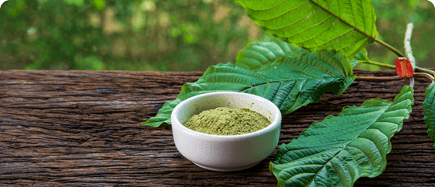The American Kratom Association (AKA) is speaking out on the heels of the U.S. Food and Drug Administration’s (FDA) February 6, 2018 announcement that its latest research suggests that kratom (mitragyna speciosa) is, in fact, an opioid. But a group of scientists have issued a letter to Acting DEA Administrator Robert Patterson and Presidential advisor Kellyanne Conway, urging them to disregard the FDA’s latest batch of information.
The nine scientists wrote, in part, “We believe strongly that the current body of credible research on the actual effects of kratom demonstrates that it is not dangerously addictive, nor is it similar to ‘narcotics like opioids’ with respect to ‘addiction’ and ‘death,’ as stated by the FDA in its November 14th Kratom Advisory.
“Equally important, four surveys indicate that kratom is presently serving as a lifeline away from strong, often dangerous opioids for many of the several million Americans who use kratom. A ban on kratom that would be imposed by CSA Scheduling would put them at risk of relapse to opioid use with the potential consequence of overdose death.”
AKA Board Chairman Dave Herman also came down on the FDA and its PHASE Modeling System, stating that, “The FDA wants the DEA (U.S. Drug Enforcement Administration) to accept the ‘novel scientific analysis and computational model’ theory that if kratom ‘binds’ to the opioid receptor in the brain just as opioids do, then it logically must have the same respiratory suppressing effect on users as opioids do, ergo, kratom must be an opioid.”
He added, “The problem is that their conclusion is completely and utterly wrong!…It smells of desperation because they know they are losing the battle of real science, so they made up ‘novel’ new science.”
Researchers and the scientific community as a whole agree that kratom appears to impact the brain’s µ-opioid receptors or MORs. The FDA ran kratom through its proprietary PHASE modeling system in order to arrive at this conclusion. But opponents such as the AKA point out that µ-opioid receptors activation is not the only criteria for defining and identifying an opiate. One must also examine the substance’s effects, amongst other properties.
In fact, AKA Board Chairman Herman highlighted this fact in a very adept manner in his formal written response to the FDA’s announcement. Herman pointed out that there are other non-opioid substances—such as naloxone (sold under the brand name Narcan)—have the ability to bind to and activate the brain’s µ-opioid receptors. But critically, naloxone is not considered an opiate.
Approved by the FDA in 1971, naloxone is included on the World Health Organization’s (WHO) List of Essential Medicines and it is widely regarded as one of the safest and most effective medications in existence. Naloxone does have the ability to bind to MORs, but it lacks other key properties of an opiate, such as the tendency to induce respiratory suppression. It’s an opiate’s respiratory suppression properties that make this type of substance so potentially dangerous.
Naloxone is routinely used worldwide to treat patients who are suffering from acute opioid overdose. In fact, naloxone is credited with saving thousands upon thousands of overdose patients who would otherwise succumb to respiratory failure. High doses of opioid drugs can depress respiratory function to the point whereby the patient ceases to breathe, ultimately resulting in death. But naloxone reverses the opiate’s effects by acting upon the very same receptors in the brain.
“The ‘novel scientific analysis and computational model’ would be stumped to explain why naloxone is not dangerous but kratom is because both substances bind to the opioid receptors in the brain,” Herman explained, adding, “Kratom does bind to the opioid receptors in the brain, but it does not suppress a user’s respiratory system any more than naloxone does. That is why there are no deaths that can be classified as ‘caused’ by use of kratom….But the FDA claims that the new data produced by their ‘whiz-bang’ new computer model ‘provides even stronger evidence of kratom compounds’ opioid properties.’”
In fact, Herman points out that kratom “…does not suppress a user’s respiratory system any more than naloxone does. That is why there are no deaths that can be classified as ‘caused’ by use of kratom.”
The FDA went on to cite a total of 44 deaths that were allegedly “associated with the use of kratom.” But In the AKA’s formal response to the FDA’s announcement, Herman wrote, “…the FDA admitted that ‘many of the cases reported could not be fully assessed because of the limited information provided.’ The FDA is not claiming that there are 44 deaths caused by kratom use. They are claiming that 44 people died from a range of causes—including just being completely unexplainable (sic)—while also using kratom. Those people who died likely also drank water, a soda, or used hair shampoo in the shower that day.” Yet none of those other substances were formally “associated” with the deaths.
Notably, the FDA has never successfully banned a substance because it supposedly held the power to be dangerous when mixed with another substance. But that’s precisely what kratom proponents say is happening here.
Herman explained, “The FDA properly gives guidance on the contraindications of using drugs and other substances concurrently. But it does not ban one substance because it might create a death if used concurrently with another substance…the FDA makes the huge leap to conclude that kratom is not ‘just a plant—it’s an opioid.’
He called upon the FDA to keep the American public’s best interests in mind, urging the agency to rely upon solid, scientific research and not hype, conjecture, or computer-generated “trick plays.” Herman also urged the DEA to ignore what he categorized as the FDA’s latest attempt to get kratom scheduled as a controlled substance.
Kratom captured the attention of the FDA back in 2009, when it made headlines in Sweden where a total of nine people died in connection with a mix of drugs called Krypton. Krypton contained kratom and what was found to be a toxic dose of o-desmethyltramadol. O-desmethyltramadol is the active metabolite found in tramadol, a commonly-prescribed pain medication. In fact, the o-desmethyltramadol dosage was officially cited as the cause of death in those cases.
“The FDA is well aware of the true cause of death—based on [research performed by] highly credentialed scientists—was from that active metabolite of tramadol,” Herman added.
Notably, the DEA had previously considered an emergency scheduling that would have placed kratom’s key alkaloids—mitragynine and 7-hydroxymitagynine—in the same category as highly dangerous drugs such as heroin and cocaine. While that emergency Schedule 1 status did not ultimately proceed, the future of kratom remains uncertain in the U.S. A number of U.S. states have already banned kratom, including Wisconsin, Indiana, Vermont, Rhode Island, Washington D.C., Tennessee, Alabama, Arkansas and a handful of additional counties in states such as Florida and Illinois.
But the proposed emergency scheduling did have one positive impact: it prompted thousands of Americans to come forward and share their personal anecdotes to depict precisely how kratom has improved their quality of life. The American Kratom Association is a non-profit organization that is committed to sharing these stories on their website, AmericanKratom.org.
Want to learn more about kratom quality and value? Start here:
Why Buying Cheap Kratom Can Be Dangerous


